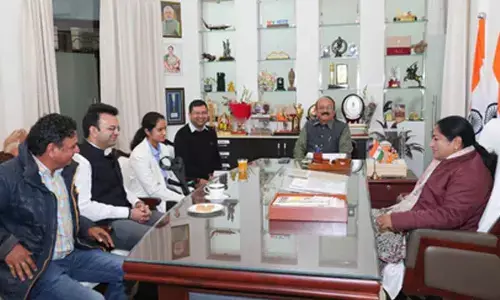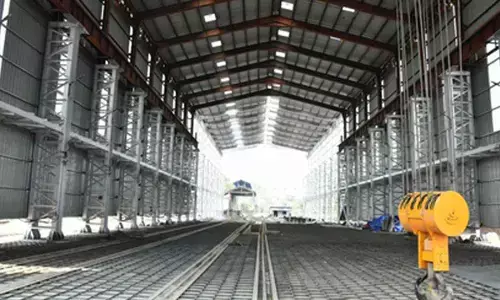Tobacco, alcohol raises risk of head and neck cancers by 35-fold: Experts
Share :

Tobacco and alcohol are the two major reasons behind the rising cases of head and neck cancers (HNC) in India, accounting for a 35-times higher risk, experts said on Sunday.
Tobacco and alcohol are the two major reasons behind the rising cases of head and neck cancers (HNC) in India, accounting for a 35-times higher risk, experts said on Sunday.
HNC typically consists of anatomical sub-sites like tongue, mouth, other parts of the pharynx like oropharynx, nasopharynx, hypopharynx, salivary glands, nasal cavity, larynx (voice box), etc.
"India is considered the head and neck cancer capital of the world. Head and neck cancer (HNC) accounts for about 17 per cent of all newly diagnosed cancer cases in India of which mouth cancer in males is most common in India. The lifestyle of people, particularly in the northern regions, where smoking or chewing tobacco is common, is a significant cause of the high burden of head and neck cancer," Dr. Mudit Agarwal, Unit Head & Senior Consultant, Head & Neck Oncology, Rajiv Gandhi Cancer Institute & Research Centre (RGCIRC), told IANS.
"Compared to the Western countries (with a prevalence of 4 per cent), HNC accounts for 27.5 per cent of all cancers in India. These cancers are most common in our male population and are fourth in incidence among females," added Dr Ashish Gupta, Chief Oncologist, Unique Hospital Cancer Centre, Delhi who is heading Cancer Mukt Bharat Campaign in India.
The experts blamed changing lifestyles, increased longevity, and addiction to tobacco and alcohol. "Tobacco (smoked or chewable forms), alcohol, areca nut (pan masala), and dietary malnutrition are common etiological factors which are also important downstream social determinants. Heavy users of both tobacco and alcohol have a 35-fold higher risk of head and neck cancers," Dr Ashish told IANS.
In India, unfortunately, 60-70 per cent of patients come at an advanced stage, as a consequence of which most receive radical treatment which may be disfiguring to some extent.
However, with medical advancements like jaw reconstruction surgery, computer-assisted 3D designing technology, and facial reanimation techniques, the treatment now emphasises patient rehabilitation, Mudit said.













